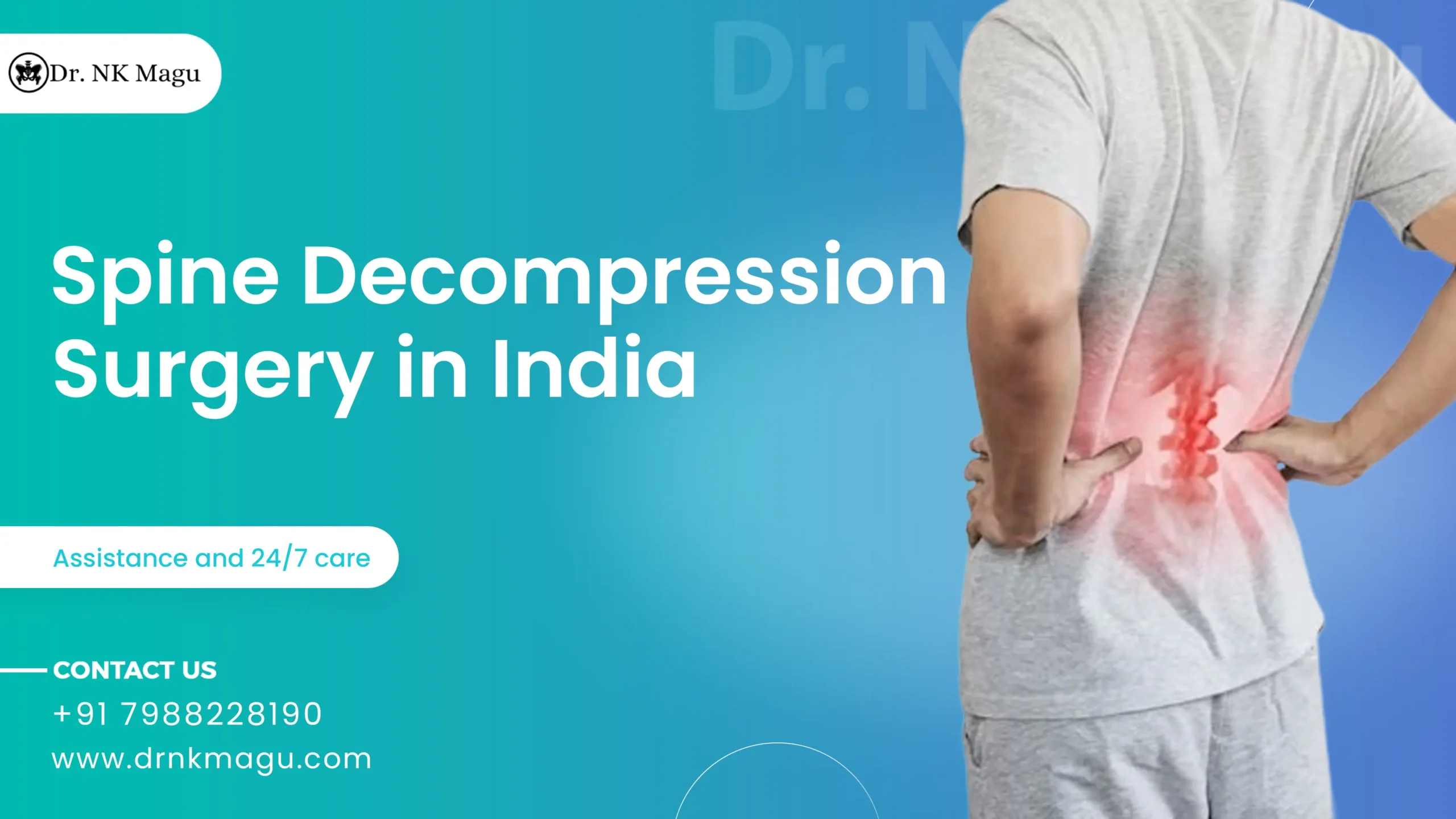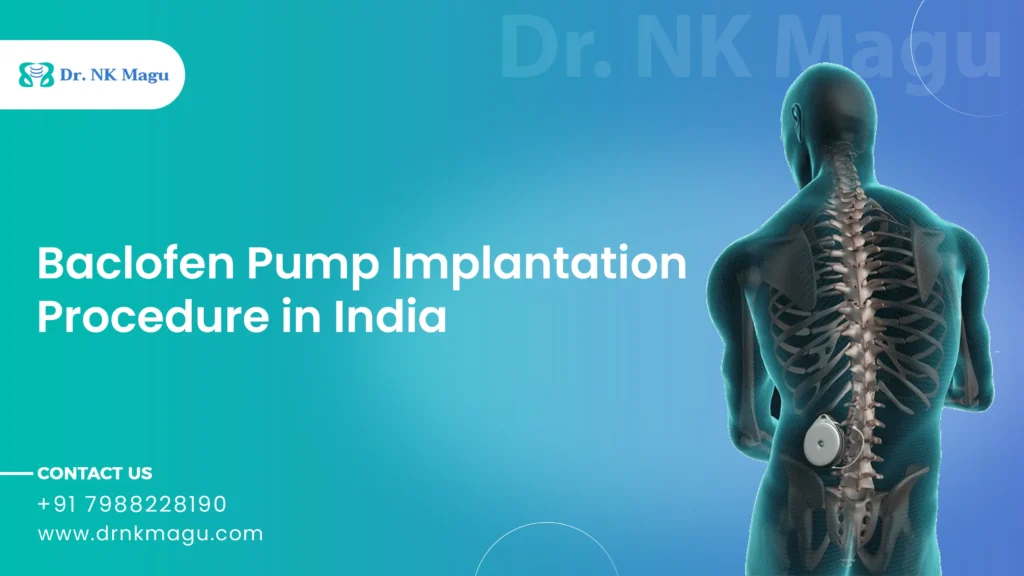The spine gives support to our body. It is made up of bones called vertebrae that are kept flexible by spinal discs and ligaments. A nerve supply passes through the middle of these bones, ligaments, and disks via your spinal column. Pain may result from spinal injuries or degeneration (wear and tear) of the spine. When your spine becomes compressed, pressure is applied to your spinal cord and nerves, causing pain. In order to reduce pain, spinal decompression aims to release pressure.
What is Spine Decompression Surgery?
Pain in the spine can be relieved by two surgical ways, either by stabilizing the structure of the spine or by releasing pressure on nerves. Spine decompression surgery is a therapy that relieves pressure on the neural components of your spine, thereby providing relief from back pain.
What Conditions Can Be Treated With Spine Decompression Surgery
The lower back (lumbar spine) and neck (cervical spine) are the most common areas where these surgeries are used to treat pain and other symptoms. Since the thoracic spine is the most stable area of the spine, symptoms there are possible but uncommon. Common conditions treated with this surgery are
- Spinal stenosis
- Cervical myelopathy
- Cauda equina syndrome
- Spondylolisthesis
- Herniated disc
- Sciatica
- Degenerative discs
When Is The Right Time To Perform Spinal Decompression Surgery
Decompression surgery may be a good option when nonsurgical measures like physical therapy, epidural steroid injections, or pain management regimens have proven ineffective in relieving back or neck pain and/or neuropathies brought on by nerve compression from a herniated disc, spinal stenosis, or spondylolisthesis.
Spine Decompression Surgery Cost in India
Spine decompression surgery cost in India starts from Rs. 3,50,000 to Rs. 5,40,000 (4200 USD to 6500 USD). It can also vary based on factors such as the city, hospital, and the specific procedure required. India has gained recognition for providing quality medical care at a fraction of the cost compared to many Western countries, making it an attractive destination for those seeking affordable spine decompression surgeries.
| Starting Cost | Rs. 3,50,000 (4200 USD) |
| Average Cost | Rs. 4,00,000 (4800 USD) |
| Maximum Cost | Rs. 5,40,000 (6500 USD) |
Starting Average Prices in Different Cities:
| Cities | Starting Price |
| Delhi | Rs 3,50,000 (4200 USD) |
| Gurgaon | Rs 3,25,000 (3907 USD) |
| Noida | Rs. 3,00,000 (3607 USD) |
| Mumbai | Rs 3,50,000 (4200 USD) |
| Hyderabad | Rs. 3,00,000 (3607 USD) |
| Chennai | Rs 3,50,000 (4200 USD) |
| Kolkata | Rs. 3,00,000 (3607 USD) |
| Bangalore | Rs 3,50,000 (4200 USD) |
What Takes Place During Spine Decompression Surgery
Any kind of spinal decompression involves modifying or removing soft tissues, spinal discs, or bone that is compressing a nerve. The methods differ depending on which tissues are compressed. To relieve pressure on the nerves, laminoplasty, for instance, entails reshaping a portion of the vertebral lamina, while laminotomy involves creating a small hole in the lamina, and laminectomy involves removing the entire lamina.
Diagnosis to Determine the Severity of Spine Injury
For a better understanding of the injury, you might have to go through several tests such as:
- Bone scan – It can identify the cause of back pain by finding infections, cancer, or fractures in the bones
- Diagnostic imaging – Imaging tests such as MRI, CT scan, and X-rays can be used to take the inside picture of the body. The source of pain can be indicated by these pictures
- Diskography – Your doctor will inject contrast into your back, which is a dye that appears on X-rays and other scans. Next, images are captured by a computed tomography (CT) scan. Diskography can display any disk damage
- Electrical tests – Tests such as electromyography is done for the purpose of examining the electrical activity in the muscles and nerves. The speed at which electrical signals travel from the nerve to the brain is measured in an evoked potential study. The function of the nerves is measured by nerve conduction studies (NCS).
Types of Spinal Decompression Surgery
Surgery is typically considered only when the other alternative therapies do not work. Your healthcare provider will suggest what will work best for you based on your condition. Common surgical options are:
- Laminectomy – The lamina, a bony roof covering the spinal canal is removed from one or more vertebrae. It results in the decompression of both the left and right sides of the vertebral canal
- Laminotomy – A small part of the lamina is removed from one side of the canal, either left or right. Most part of the lamina is intact and unharmed
- Microsurgical laminoplasty – It involves the use of an operating microscope inserted through a small incision. The techniques allow decompression in a minimally invasive way
- Microdiscectomy – Commonly performed on patients with sciatica or herniated disc in the lower back. This involves making incisions that don’t damage the muscles in order to remove the portion of a herniated disc that is pressing on the spinal nerve and producing pain
- Lumbar discectomy – It is also known as endoscopic percutaneous disc removal. A portion of the herniated disc that is compressing the spinal nerves is removed by making a tiny incision with a scope. The process is quite similar to microdisectomy.
- Foraminotomy: By removing bone or other tissue, the surgeon widens the opening of the nerve roots. Pain is reduced by creating spaces for your nerves to leave the spinal cord
- Corpectomy – It involves the removal of a disk or vertebra. The surgeon may perform a spinal fusion, which joins two bones, to stabilize the spine.
Benefits of Having Spine Decompression Surgery
Your back pain and its related issues can be resolved with spine decompression surgery. This surgical approach allows you to have a personalized treatment based on your specific condition. You will get relief from your chronic pain and you will be able to return to work, school, or play after receiving treatment.
Risks Associated With Spine Decompression Surgery
Spine surgery is safe and considered a low-risk procedure. However, there are possibilities that you might experience these complications such as:
- Infection
- Bleeding
- Blood clots
- Nerve damage
- Tissue injury
- Re occurrence of pain
Alternative Approach For Spinal Decompression Surgery
There are certain alternative or complementary therapies that can reduce pain without surgery. You may think first about having:
- Physical therapy – A physical therapist will teach you stretches, better ways to lift objects and pain-relieving exercises
- Acupuncture – To relieve pain, tiny acupuncture needles will be inserted under the skin at various body parts
- Chiropractic care – It is a technique used to ease pain by adjusting the alignment of the spinal column
- Traction – Traction tables, weights, and pulleys are used to stretch the spine, this relieves pressure on the spine. An inversion table may also be used which is a kind of traction that uses gravity.
- Nerve stimulation – Electrical charges from a device such as transcutaneous electrical nerve stimulation (TENS) are used to relax muscles and stop nerve pain.
Why Dr. N. K. Magu?
Dr. N. K. Magu is an Indian orthopedic surgeon who is well renowned globally for his extraordinary talent and dedication to his profession. Over many years, Dr. N. K. Magu has proven himself to be an exceptional specialist in several orthopedic fields, especially in the areas of proximal femoral osteotomies, hip preservation, reconstruction, and related subjects. His reputation has been cemented by his continuous commitment to enhancing the quality of life for his many patients.












